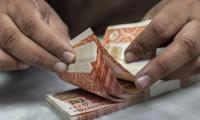The writer is the author of ‘Governing the ungovernable’.
The seventh lesson from East Asia is the emphasis on science and technology as an essential ingredient for economic progress. Considerable attention was paid to science and technology and higher education and research both in the private and public sectors as well as academia.
Korea and Taiwan (a non-Asean country) sent teams to recruit their nationals working in the US, and offered them lucrative and attractive packages to hire them back to their countries of origin. These scientists and engineers taught at the local universities and colleges, set up research institutes, worked in the laboratories and on product development of industrial conglomerates and trained hundreds of thousands of young men and women in the modern tools of science and technology.
In many places, technology parks are located on university campuses and the advanced degree candidates work on the problems facing industrial and technology firms. The dominance of Taiwanese and Korean firms – TMC and Samsung – in the semiconductor industry is the result of this investment in science and technology. China now produces 50,000 PhDs in STEM subjects compared to 34,000 in the US and produces five million graduates in STEM subjects every year. Most of the engineering and science departments in the American universities have the Chinese dominating their PhD programmes followed by Indians, Japanese, Koreans, and in recent years Vietnamese. They are equipping their future work force with the skills that would be needed by the global economy.
The eight lesson is that the average savings rate in these countries has ranged between 30 and 40 percent, supplemented by significant inflows of Foreign Direct Investment (FDI). In 2020, the gross domestic savings in East Asia and the Pacific were 36 percent while gross fixed investment was 34 percent; two percent was contributed by FDI.
China’s domestic savings rate has consistently exceeded 40 percent providing ample resources for investment. So is Malaysia’s rate of savings 43 percent and Thailand’s 33 percent. East Asian countries actually retired, in net terms, $28 billion of debt during the early 2000s. External debt-to-GDP ratio of East Asian countries in 2020 was only 19 percent, while debt service-to-export ratio was 10.1 percent – one of the lowest among the developing countries because they relied mainly on their own savings to finance investment.
Next was a culture of tax compliance. High tax compliance by the population and low incidence of tax evasion enabled these nations to invest in public infrastructure like roads and highways, bridges, ports, etc. and to spend on education and health. Once the tax base is broadened, the tax rates can come down from 35 to 25 or even 20 percent and the heavy burden borne by a small segment of the population can be eased by sharing with a larger group of taxpayers.
Tenth, one of the non-economic traits of East Asian society was a strong work ethic, discipline and trust. The labour force in each of these countries is highly disciplined, works extremely hard and carries out the orders of their supervisors ungrudgingly. The workers mind their own business without disrupting others’ work, focus on the task given and take pride in producing results. Trust and social capital have a positive impact on the quality of development by enhancing collective action, mitigating risks, promoting accountability and reducing transaction costs. Korea and Japan produce more scientists and engineers than lawyers as these countries work on the basis of trust and avoid protracted litigation which wastes a lot of productive time and dissipated energy.
Another characteristic of East Asian economies is the reliability of contract fulfillment. When a contract is given in China for production of goods, delivery of services or construction of a project, you can rest assured that it will be completed mostly ahead of time, within the stipulated specifications and without incurring any cost overruns. The attributes of reliability and low cost have made China the world’s largest manufacturing factory that has been able to attract almost all Fortune 500 companies to set up their facilities in China.
The above lessons clearly show that some of the important ingredients of the inclusive growth model can be suitably adapted and applied by South Asian countries to make headway in the future. Of course, factor endowment, culture milieu, and political and constitutional arrangements are different but there are some commonalities that can be easily adapted to suit their circumstances.
Pakistan can take advantage of its growing economic relations with China in trade, investment and transfer of technology. Our exporters are still too focused on the US and Europe. While we should continue and strengthen our trade with these countries, the most dynamic part of the world in this century is Asia. For the moment, political difficulties do not allow us to build regional integration in South Asia but this is an area of low costs and high pay-offs. After all, this was a common economic area with transport links from one end of the Subcontinent to the other. Some positive movement has taken place on trade with the Central Asian Republics and Iran and this can be further intensified for the former by their use of the Gwadar port. But we have to turn our attention towards East Asia, the fastest growing region.
Looking forward, China is finding out that it no longer has a competitive advantage in producing labour-intensive goods. ICT and decline in communication costs have allowed it to divide the tasks that are in line with their advantage. They could relocate their fabrication in relatively low unit labour costs countries or outsource the labour-intensive aspects of the production process to low income countries while they specialise in aspects which require skilled labour, technical knowhow and capital. Pakistan, as an active partner in CPEC and having a free trade agreement with China, should take advantage of this shift and attract Chinese companies to SEZ, while our business houses should enter into joint ventures with them.
As Asean countries are also on an upward sloping curve of growth, we have to strengthen our relationships with them and explore the possibilities of joining the Regional Comprehensive Economic Partnership (RECP). The countries under this FTA account for 30 percent of the world GDP and the projections show that an additional $500 billion would be added to international trade by 2030.
Pakistan’s exports under FTAs account for only 10 percent of total exports while there are no FTAs with major destinations such as the US, UK, Germany, and Afghanistan. These four countries account for 37 percent of the total exports. FTAs do improve competitiveness as they allow low tariffs relative to higher tariffs for other competing countries. Pakistan should enter into FTAs that are fair and equitable and can absorb new products.
On the domestic economic management front, the lessons distilled from the successful experience of East Asian countries over five decades (enunciated in this series of articles) should be examined, adapted to our peculiar circumstances, and applied. After all, there is a broad consensus (at least, by reading their election manifestos) among all political parties that Pakistan should adopt an inclusive growth model which allows the sharing of the benefits of economic growth with the majority of the population rather than a small elite. The sooner we do so the better off our population would become. Failing this, we will continue to remain embroiled in facing crises from time to time – approaching the IMF and external borrowers, adversely affecting our social cohesion and economic sovereignty.
Concluded
An aeroplane of the national flag carrier of Pakistan is seen in this file photo. — AFPWhile Pakistan considers...
Representational image of a graph depicting various variables. — APP/FileInitiated by the centre and fiercely...
In this picture taken on April 16, 2023, people throng a market area during shopping in Lahore. — AFPOne of the...
Honour crimes also target men. In Sikandar Ali Lashari vs The State, SHC upheld conviction passed by ATC for honour...
If Sindh earmarks Rs20 million per police station, it will cost only Rs10 billion to make them effective first...
A complex and difficult policy environment seems to be highlighted by US’s recent application of sanctions on...







